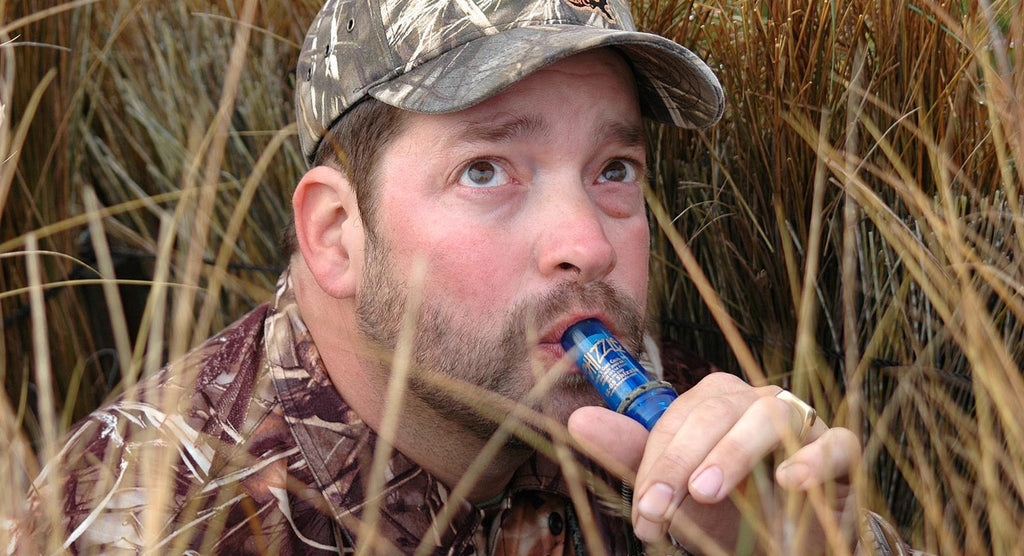Haydel's Blog
Back To Basics - Tips to Sounding Natural

Keep your calls sounding natural sounding by sticking with the basics. Fancy calling is best left on the stage for calling judges and in most situations rarely in the duck blind.
The greeting call is what I use when I first see ducks at a distance. It’s a series of 5-7 notes in descending order at a steady even rhythm (Kanc, Kanc, Kanc, Kanc, Kanc).
The comeback call is used when ducks don’t respond to your greeting or you want an immediate response such as in the timber. It’s more urgent sounding and faster (Kanckanc, Kanc, Kanc, Kanc).
A pleading call is usually followed by holding the first note a little longer than the rest of the notes (Kaaanc, Kanc, Kanc, Kanc).
These three series make up about 75% of my calling. Another 20% are single quacks and a little feed calling. As you can see I’m not much on 30 note hail calls. I have yet to hear a live hen call in this manner. I try to sound as natural as I can.
Most mallards I hear feed calling in the typical “ kitty, kitty, kitty” fashion are flying. This is what I refer to as chatter. While ducks are actually feeding the sound is more broken up and erratic sounding (da-dit da-dit dit dit, da-dit dit). Also I have found live hens only call to others after they have flown over the pond or passed their location. Usually she’ll give them only one comeback call consisting of 3-7 notes.
Keep these points in mind:
- As long as the ducks are coming in forget calling.
- When they start an erratic wing beat; hit them with a comeback call immediately to bring them back on line.
- If they look as if they may drift off-line use single quacks and feed calls to bring them back online.
- Try calling at birds as they circle when they quarter into the wind. This will make it easier for them to set up for a landing zone into the wind. Anticipate their swing and call to set them up into the shooting hole.
- Remember your whistle and mix these sounds in with your mallard call. Youngsters can blow these with ease and feel partly responsible for bringing the ducks in! The mallard drake sound should not be discounted either especially on a windless day!
- Always start high and come down the scale smoothly with no “start up note”.
- If possible use a call that applies to the species your trying to call. Talk their language (ex. blue-wing teal, use a blue-wing call).
- When team calling let one person be the leader and the other just fill in. Don’t compete against yourselves.
- Realize that all ducks are not callable and that real ducks do not call in all the ducks all the time.
- Be different! If what you are doing isn’t working…CHANGE. Don’t get stuck in a rut!
Many areas of California are famous for their numbers of pintail and widgeon. Don’t forget the whistle. Usually I switch back and forth between my mallard call and a pintail whistle. If you have a novice caller or even a kid with you this call will keep him occupied and feel like they had a part in bringing those birds in. Always try to sound like the species you are calling to. Many other complimentary calls will help you in adding the realism such as a gadwall call or even a blue wing and cinnamon teal call.
Hopefully these points will help you sound natural in the marsh; which is so very important late season and the further south you hunt. Further north a caller can get by with a lot more mistakes and has a chance to experiment a bit.
Up until now, I have discussed 95% of my calling in the field. What about the other 5%? You didn’t think I was going to let you in on all my secrets did you? OK…EXPERIMENT!









